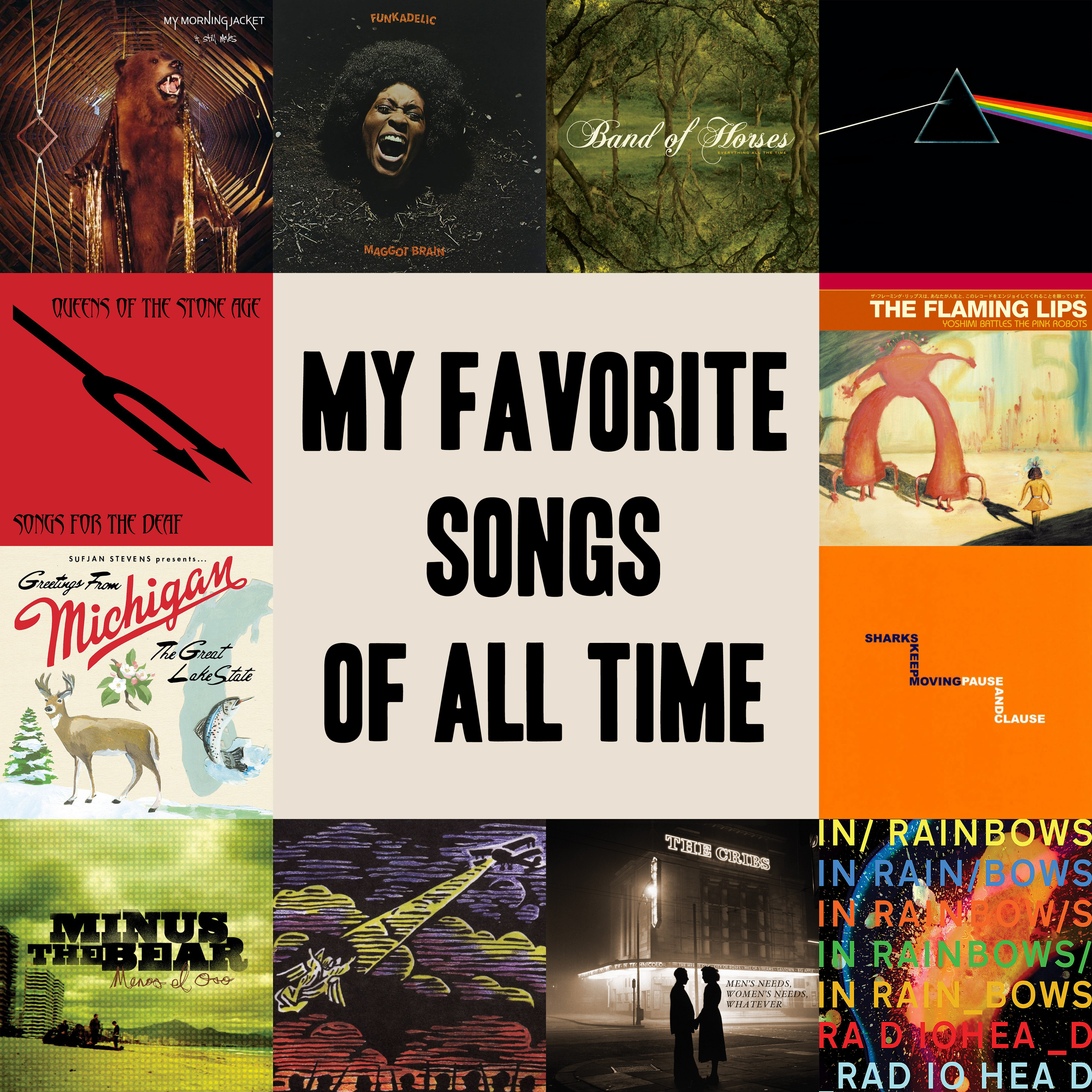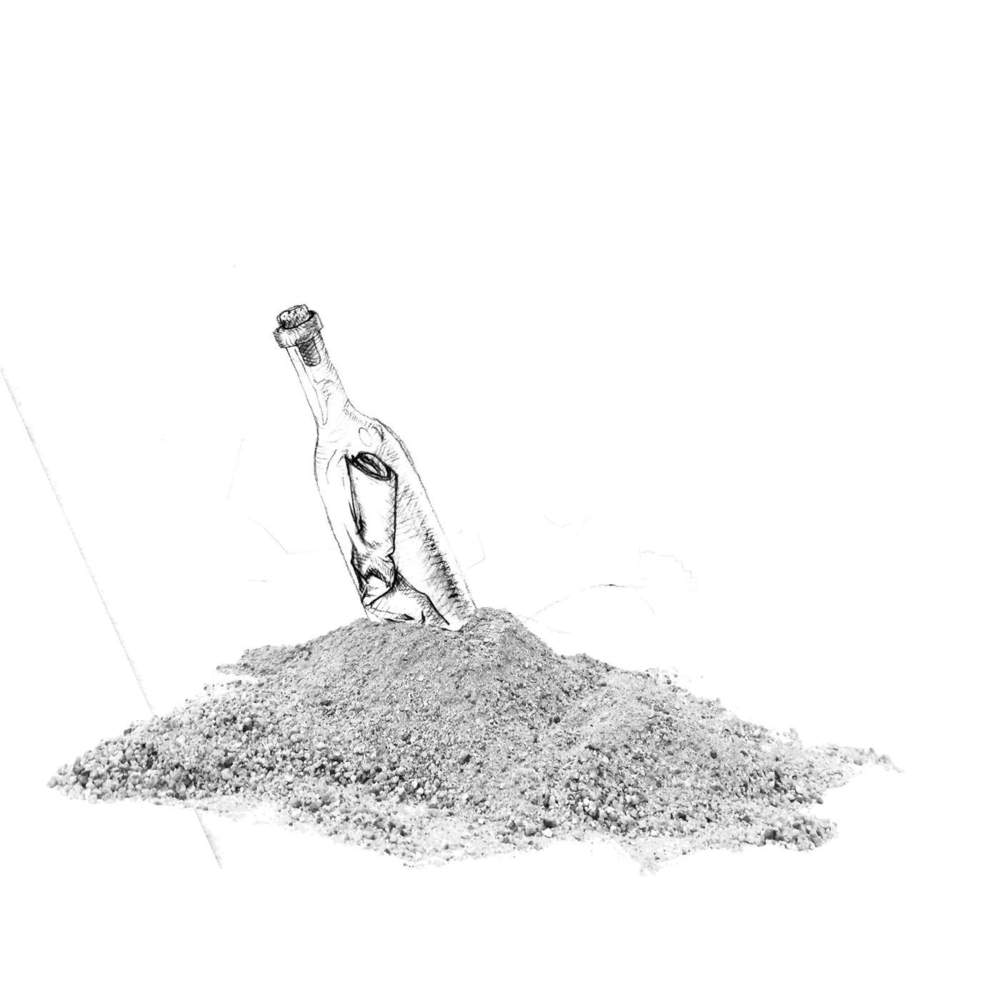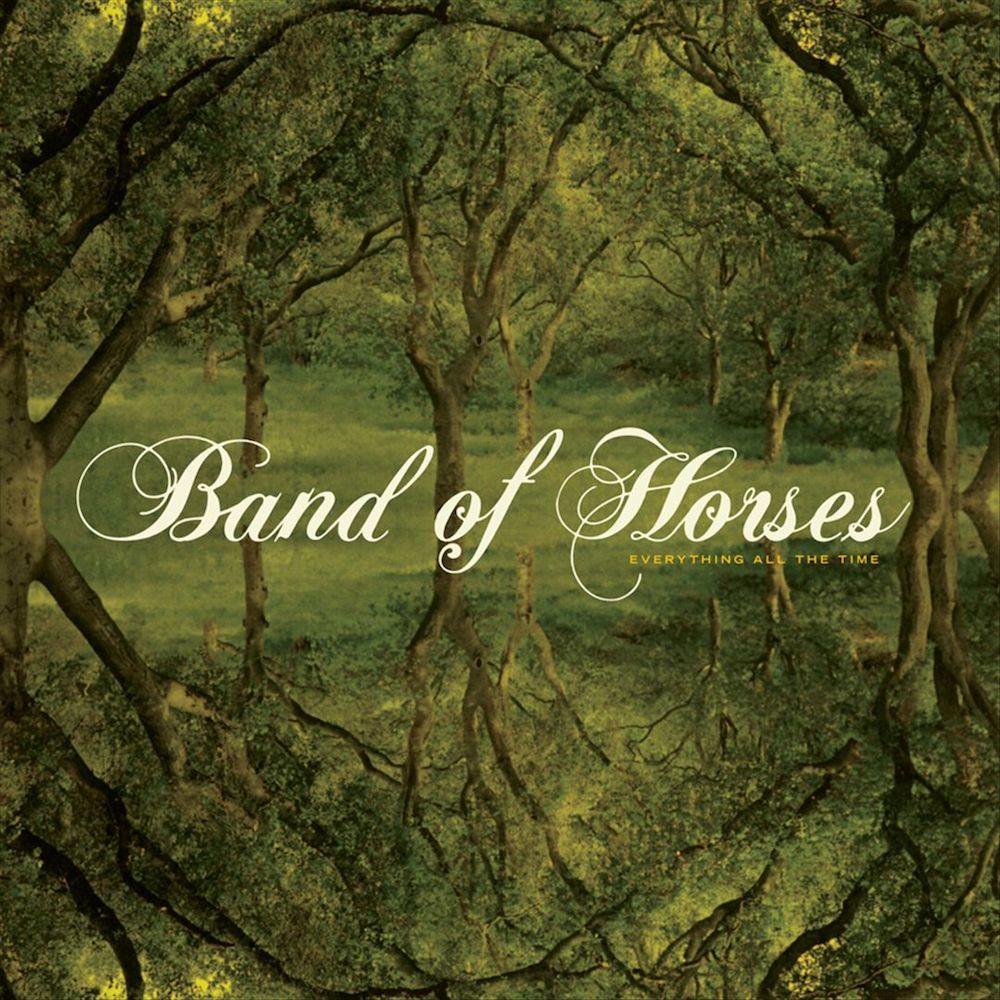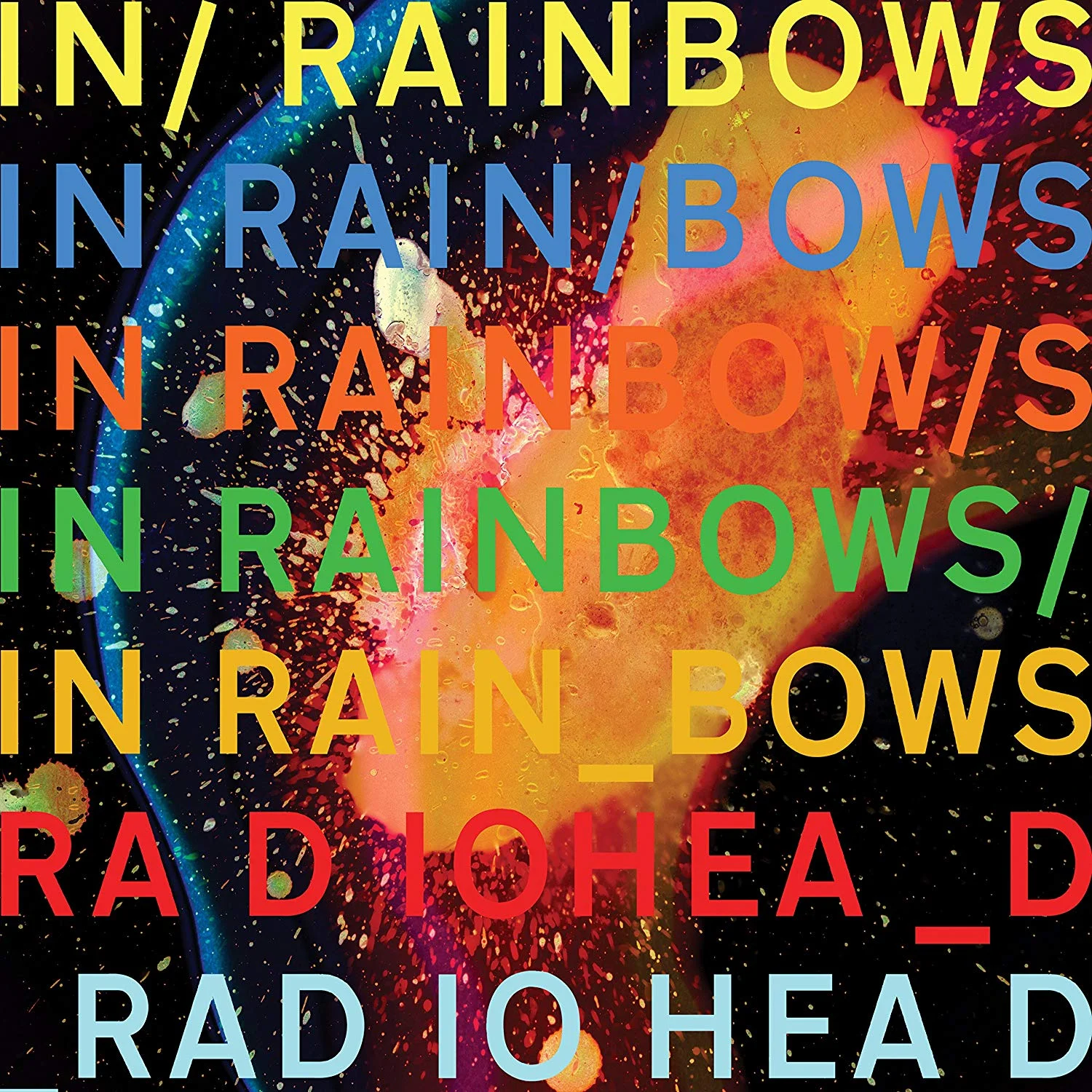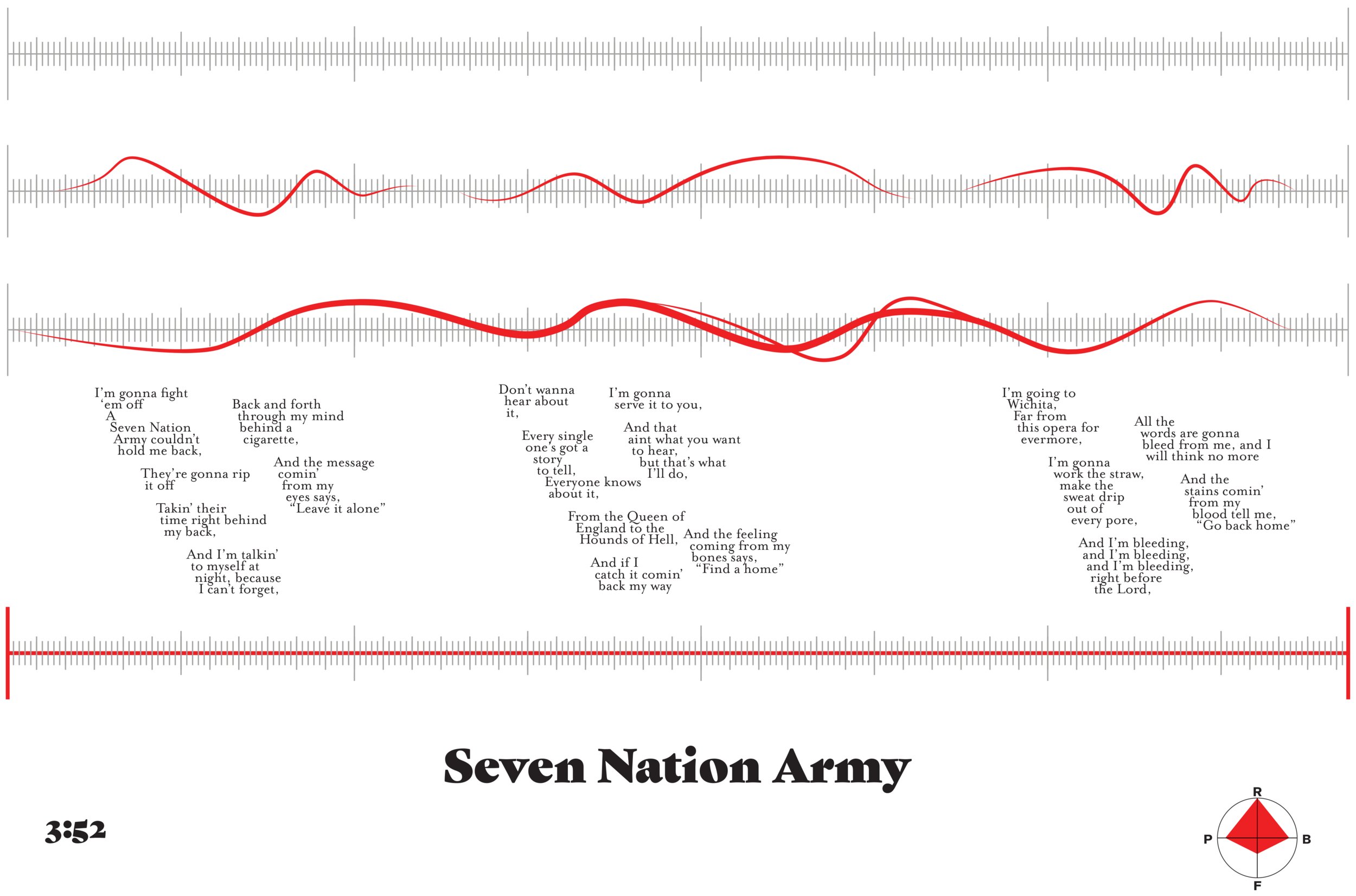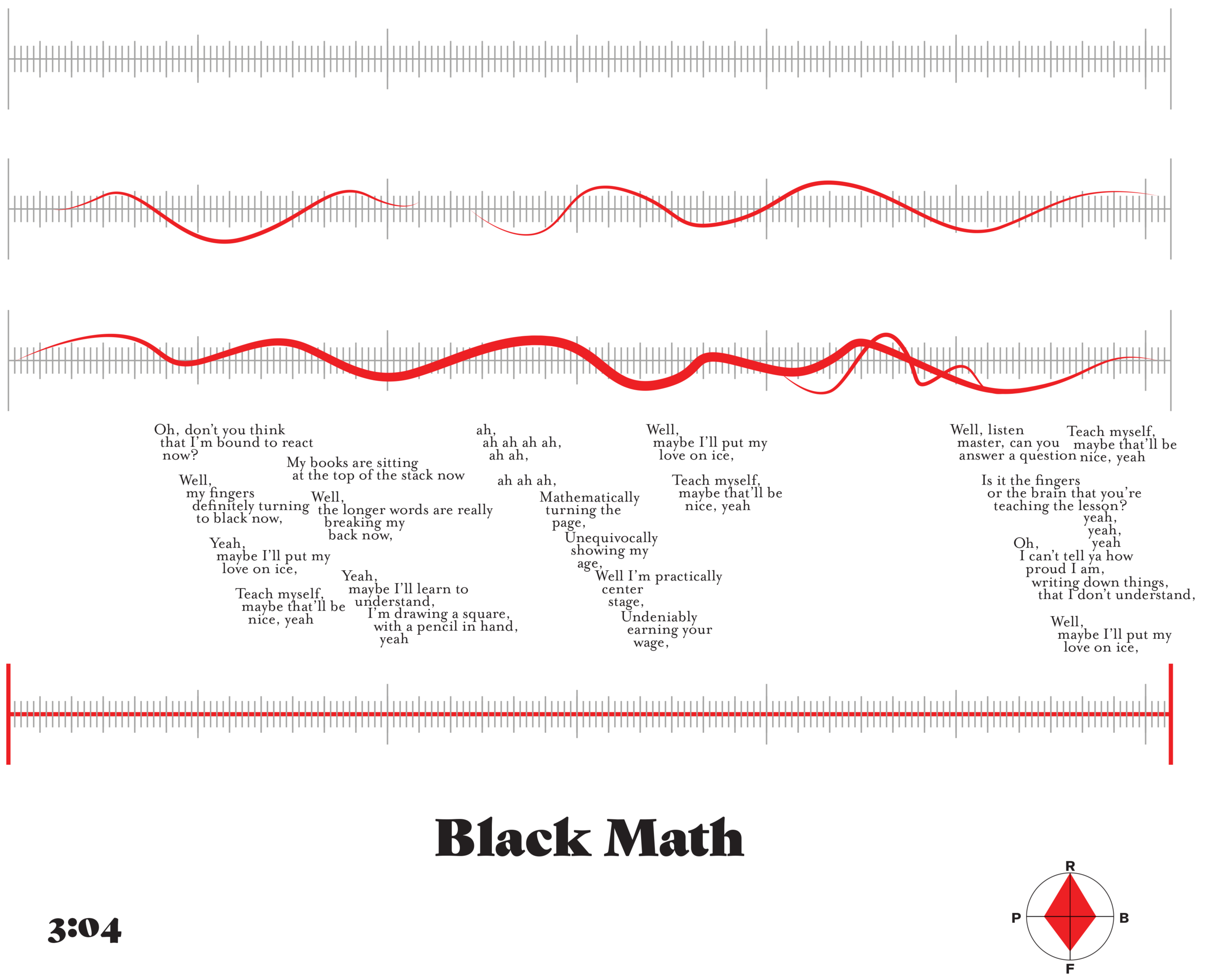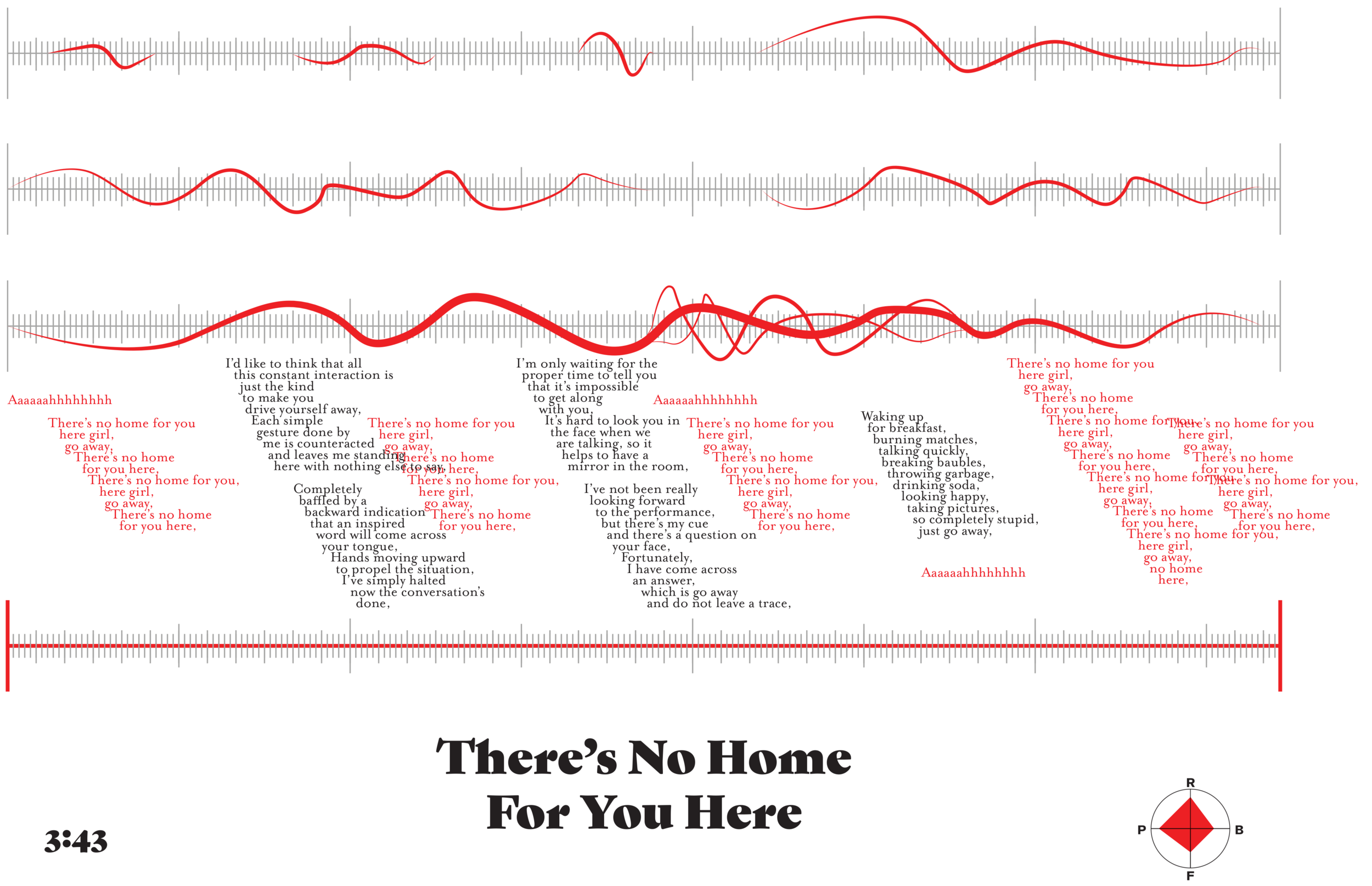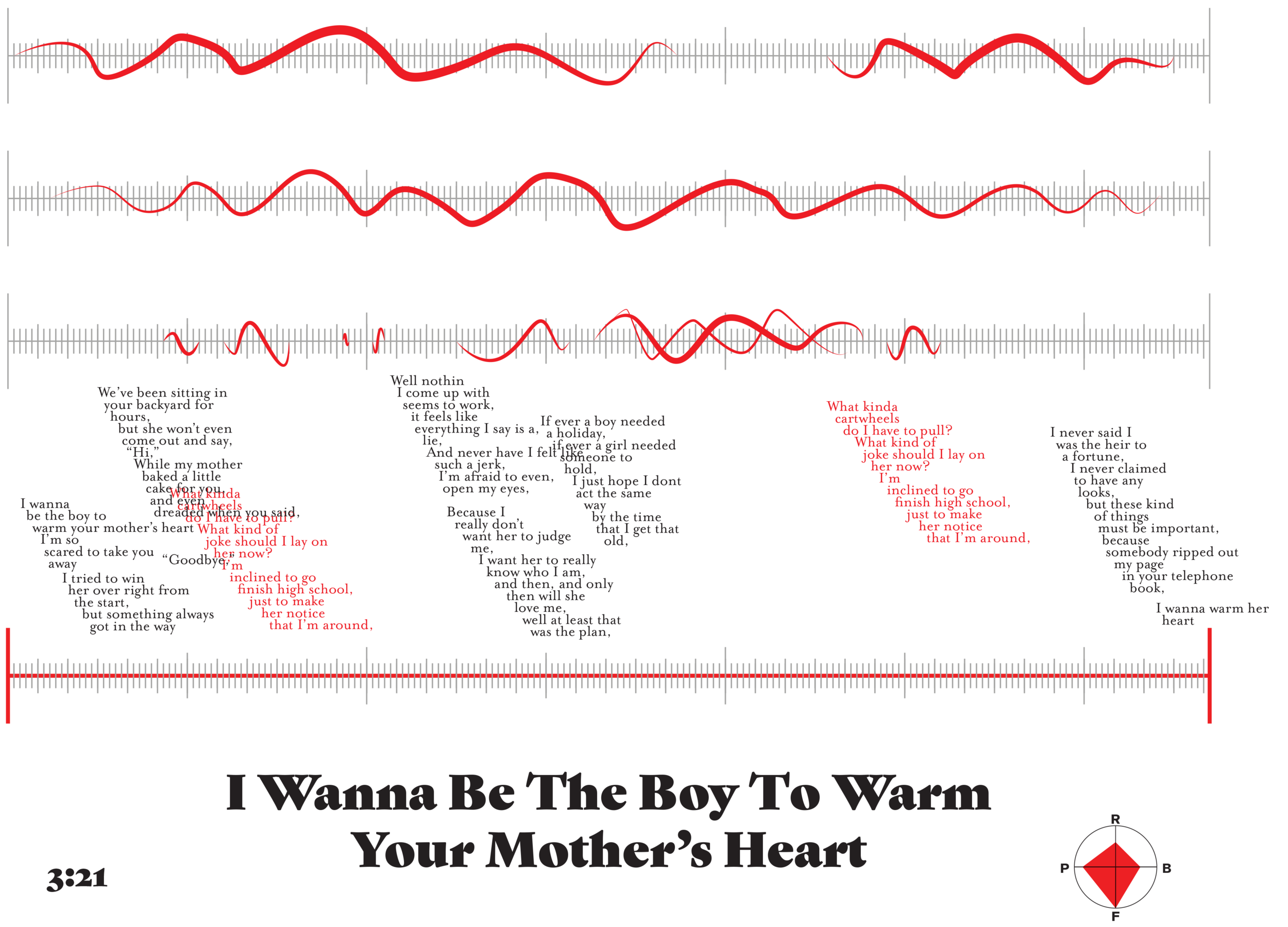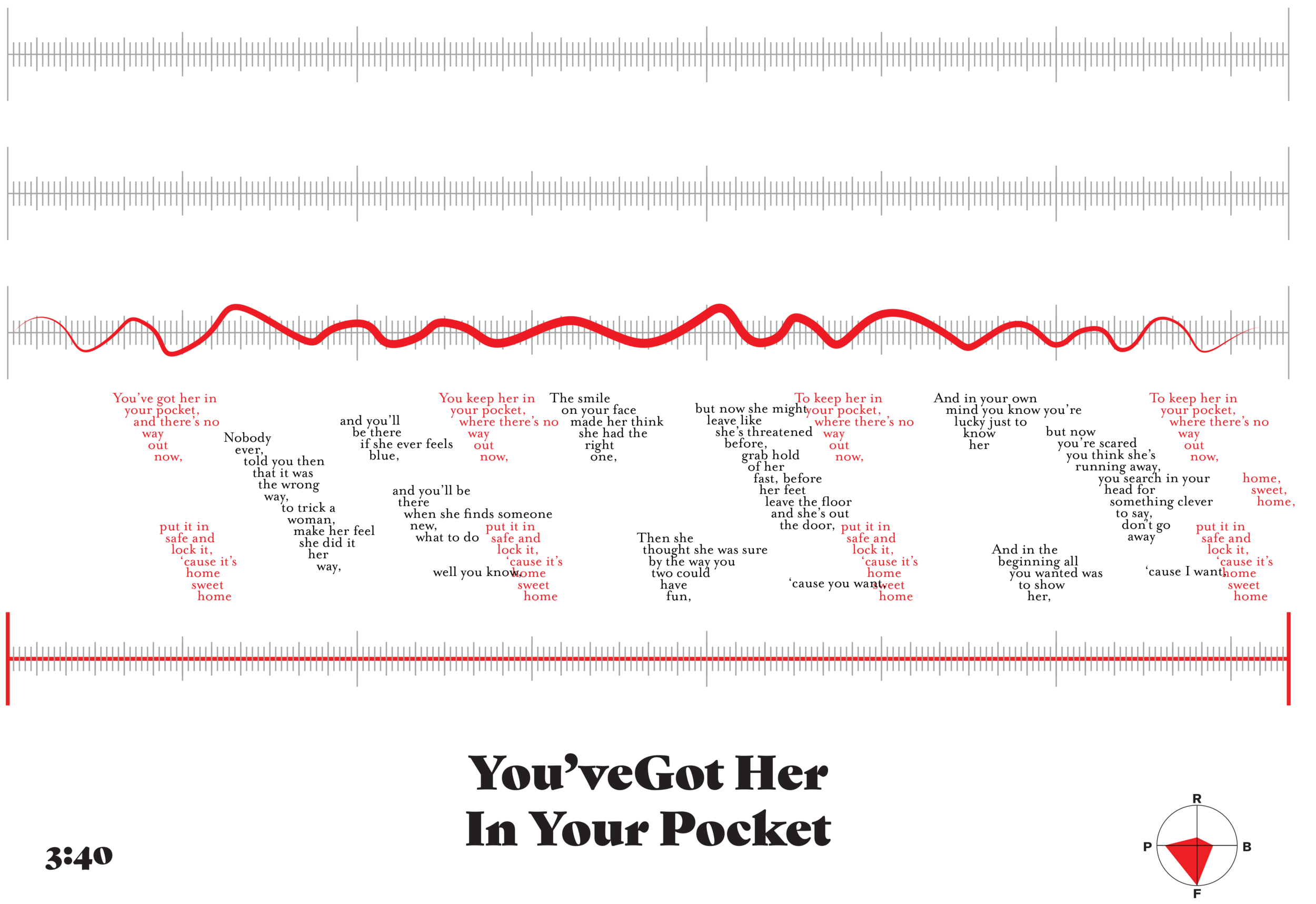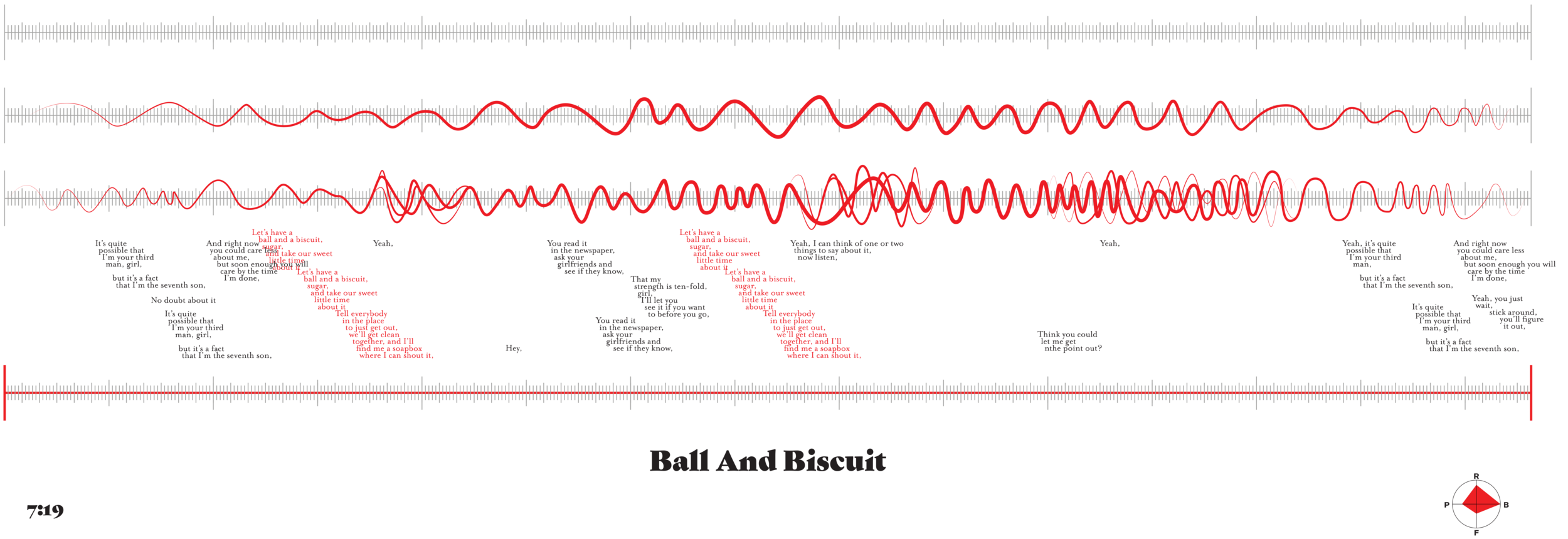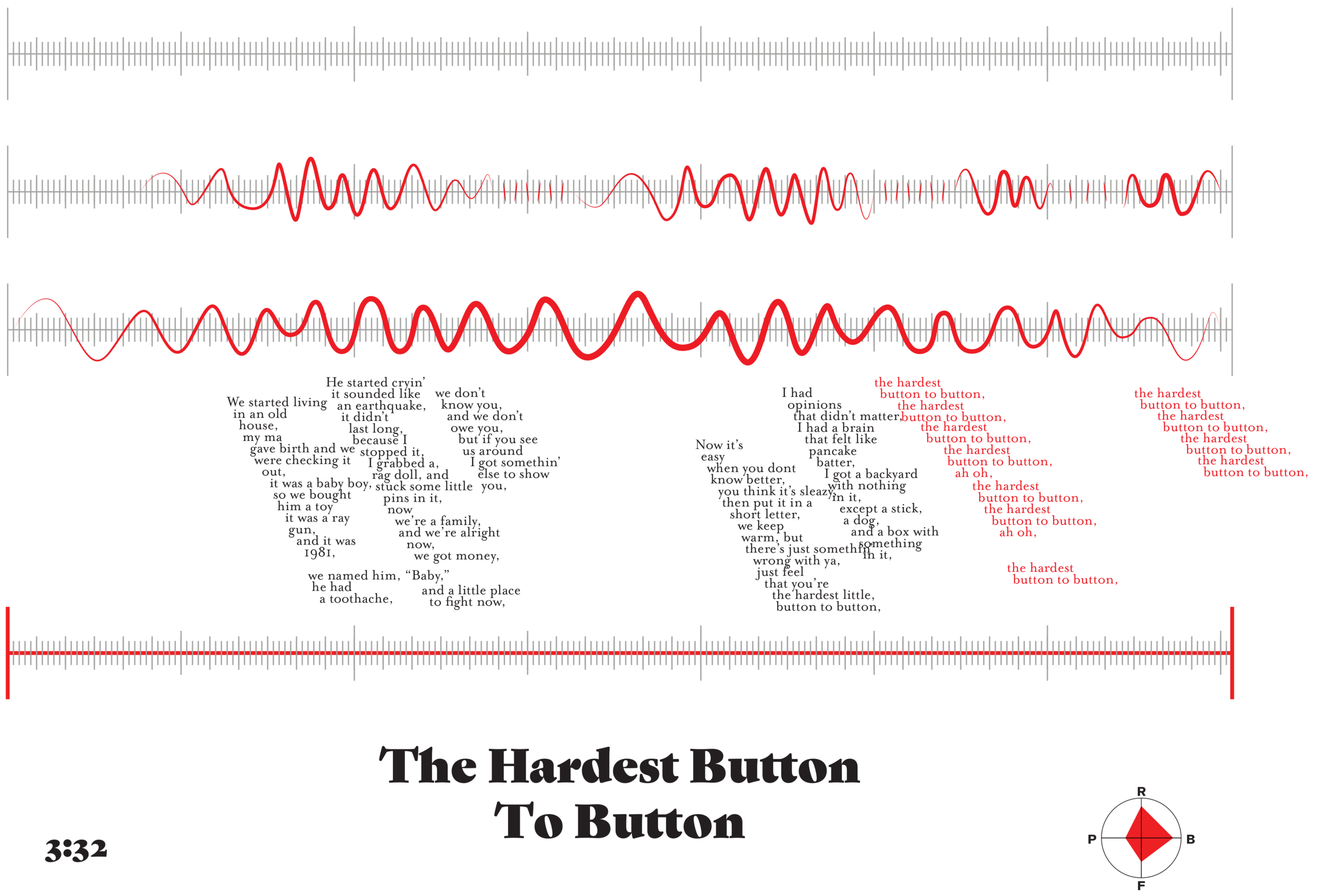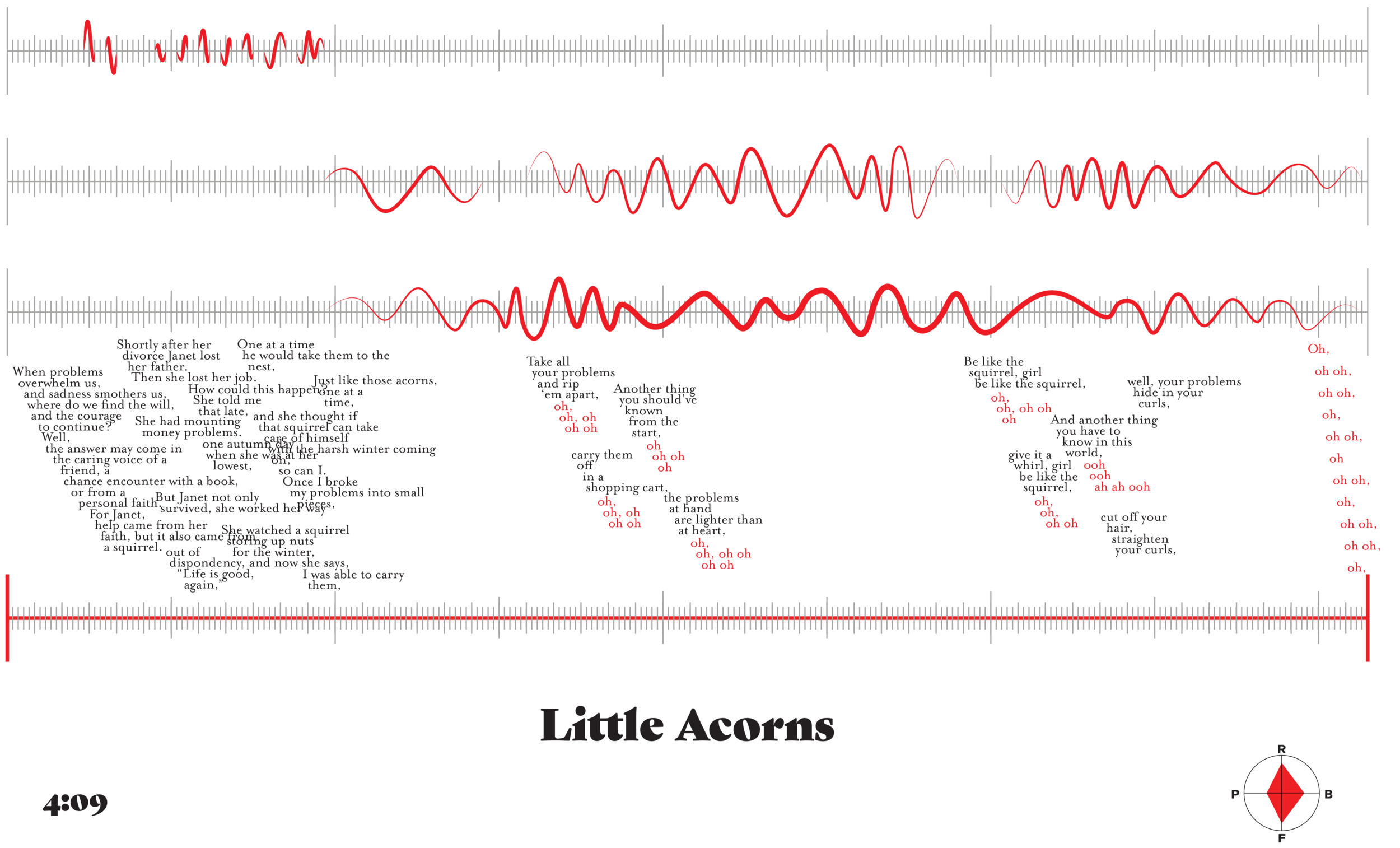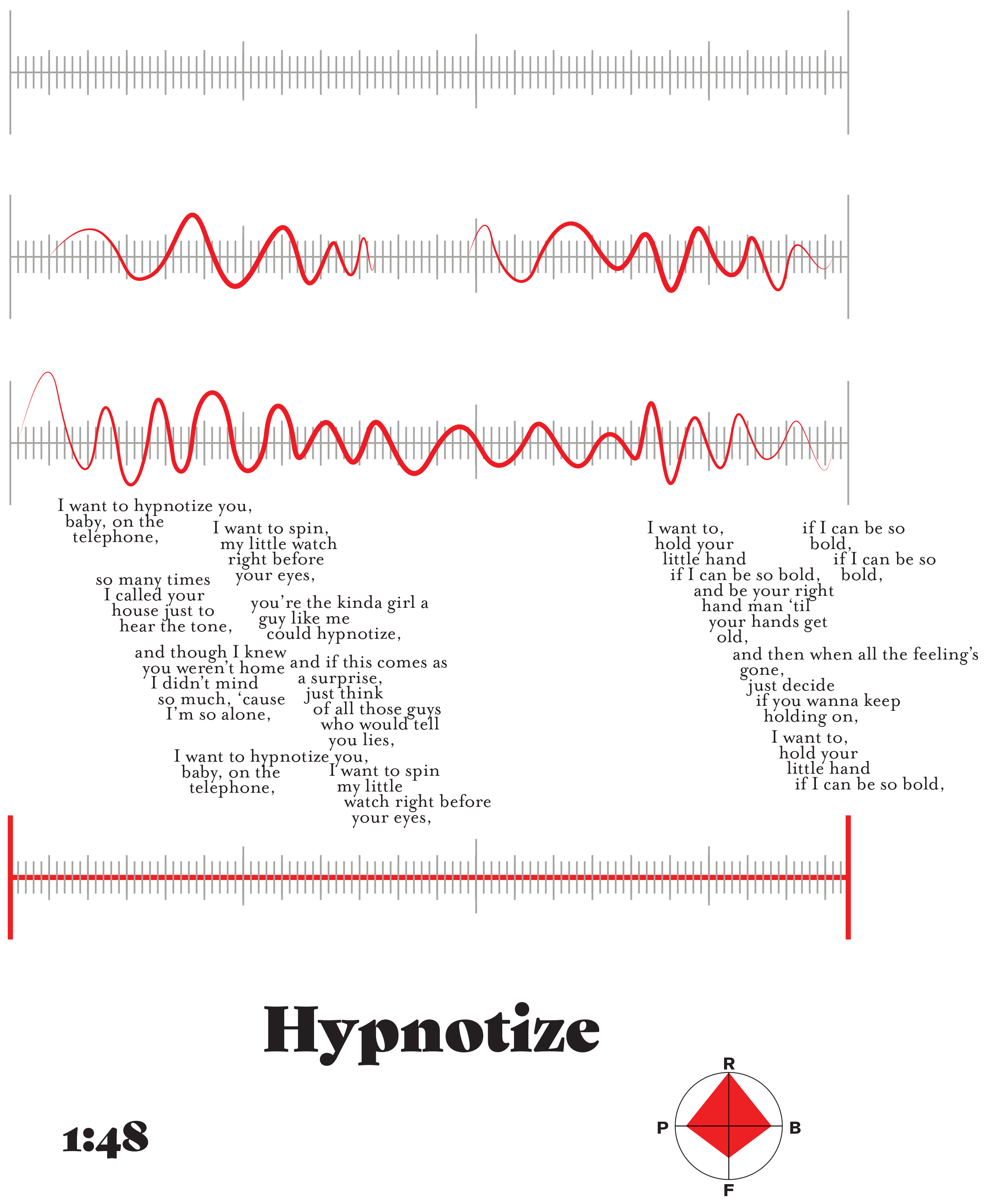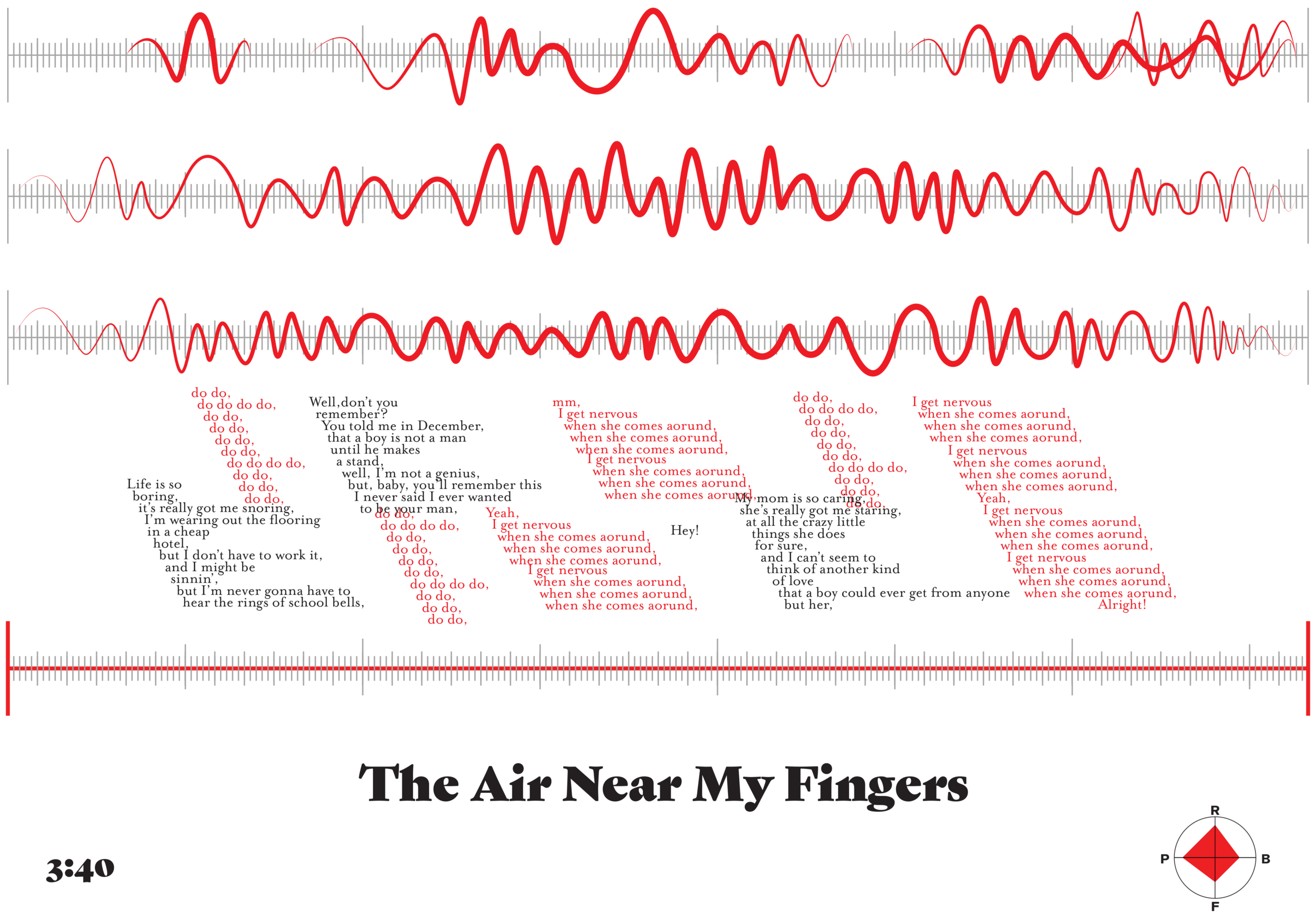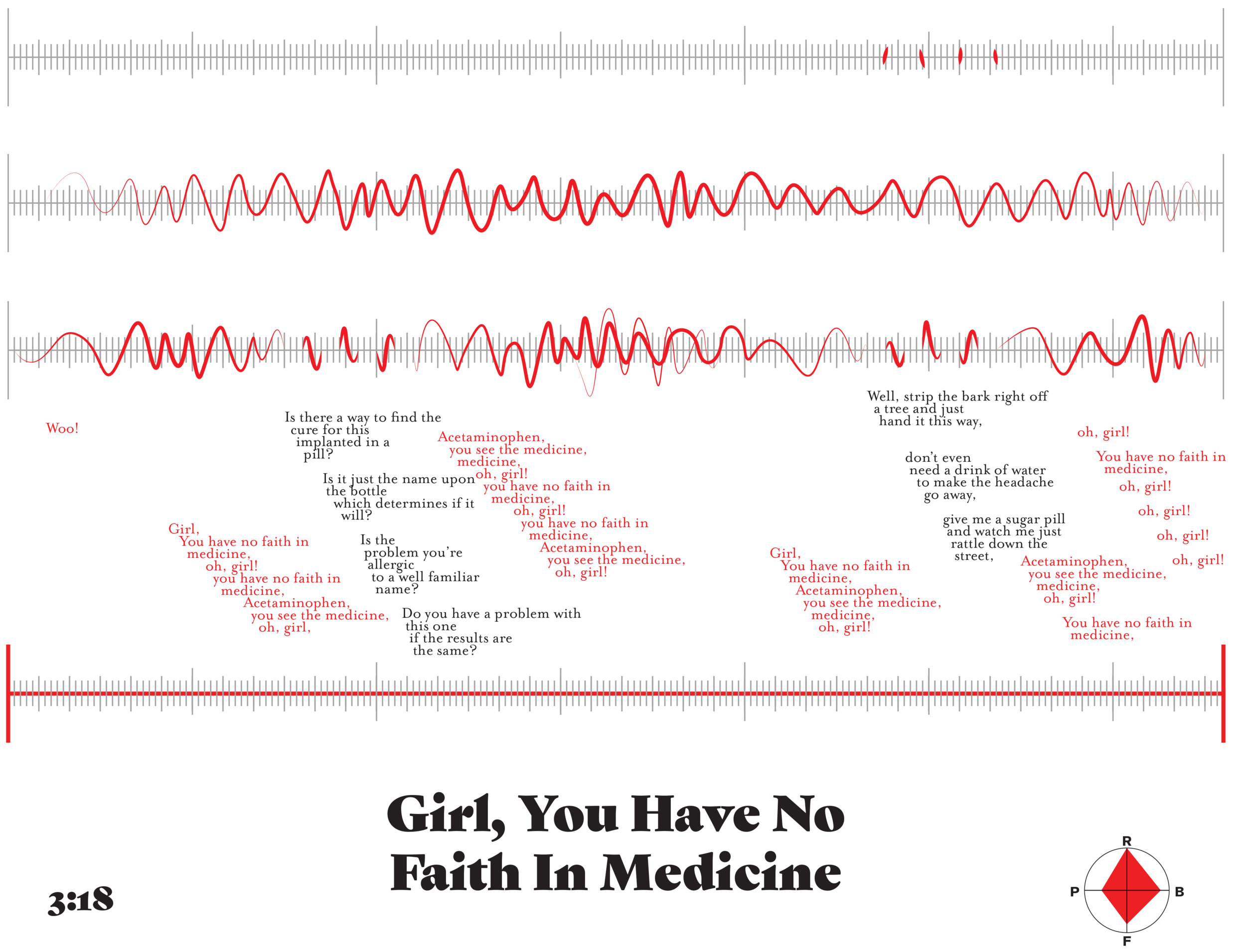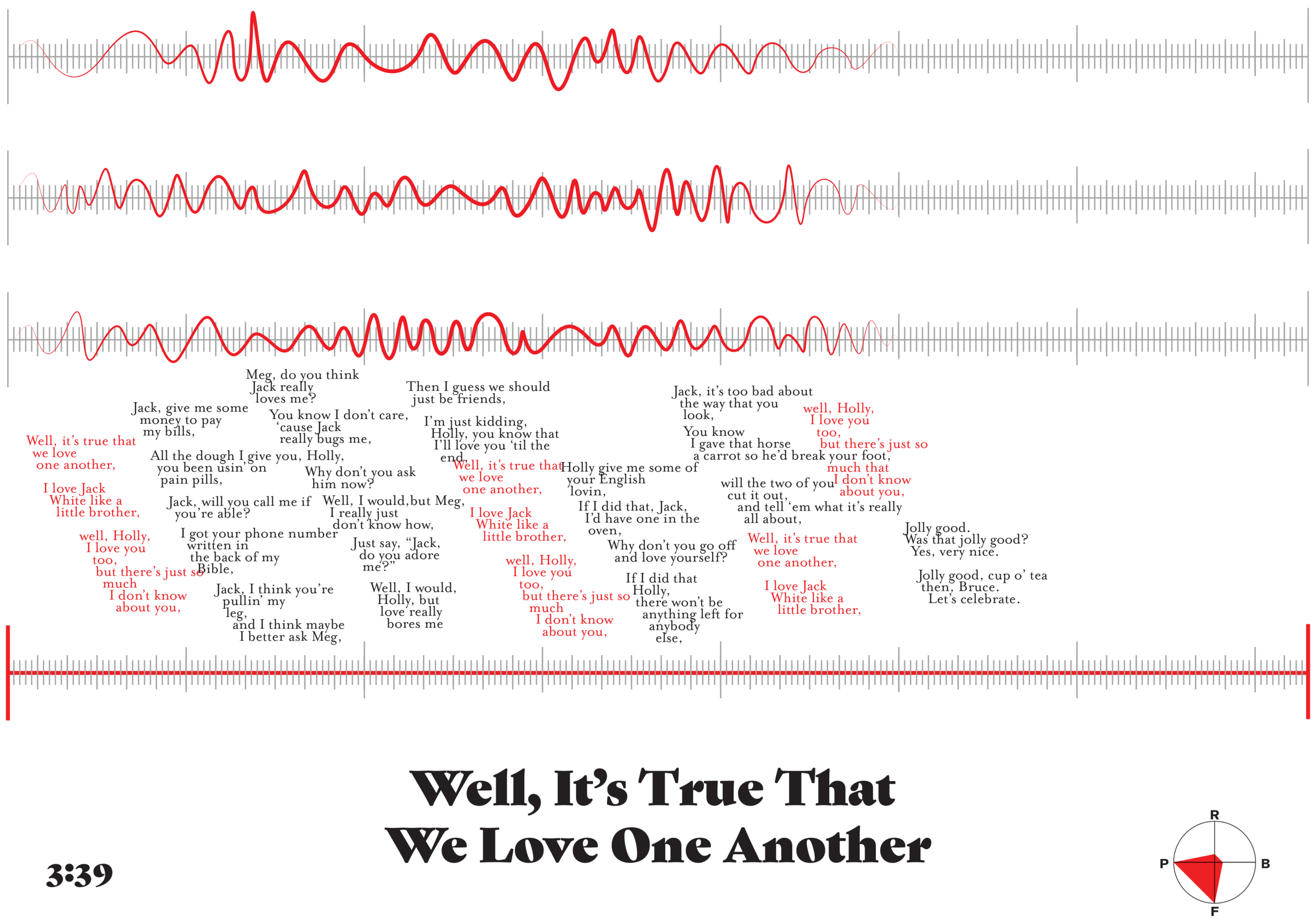My Favorite Songs of All Time
/With this post, Swim Into The Sound has officially reached 100 articles! I’ll admit between the dreary weather and burnout at work I’ve felt less than inspired to post here regularly this year, however 100 blog posts is a big deal, and I wanted to make sure that I did it justice. I’ve got dozens of different ideas for articles jotted down in digital notes across various devices, but it felt ingenuine to put up “just another” write-up as my one-hundredth post.
This January I celebrated all of the site’s recent achievements, and of course, the Favorites page has an ongoing list of our best articles, so I didn’t really want to focus on the blog from either of those perspectives. Instead, I’ve decided I’m going to do a write-up on something straightforward but important: my favorite songs of all time.
My desktop has a 100+ song playlist of my favorite songs all meticulously organized, ordered, and ranked. While that playlist still receives some regular updates, the top 15 or so haven’t changed in a number of years, so I figured why not highlight all of these tracks in one place to celebrate the site’s recent milestone? Without further adieu, I’m excited to share my 15 favorite songs of all time.
15 | Donnie Trumpet & The Social Experiment - “Sunday Candy”
Two years after Acid Rap had cemented itself in my life, I was eagerly waiting to see what Chance the Rapper would do next. Suddenly on a late May evening in 2015, an album called Surf was uploaded to iTunes for free. Released under the name “Donnie Trumpet & The Social Experiment,” Surf was a collaborative project that combined the artistic powers of Chance The Rapper, trumpeter Nico Segal, and a host of other Chicago musicians.
Making sure to savor every ounce of this new release, I wanted to ensure my first listen was special. I downloaded the album, grabbed a couple of hard ciders, and spent the evening in my backyard listening to Surf on a night that was just warm enough to enjoy without a jacket.
Surf wasn’t quite the Acid-Rap follow-up I was expecting, but it ended up being a release I enjoyed nonetheless. The record is a joyous, warm, and creative outpouring that’s filled to the brim with collaborative spirit. As my first listen came to a close, the record began to wrap up with the penultimate “Sunday Candy,” a bright and loving gospel track that finds Chance reminiscing about his grandmother’s role in his life. These expressions of love are all wrapped around a sunny, infectious chorus courtesy of Jamila Woods that radiates with happiness and a vibrant zeal for life. My first listen of the song left me breathless, tearful, and overjoyed. To this day, “Sunday Candy” still has the power to make my day a little bit better merely by its presence.
14 | Band Of Horses - “The Funeral”
While I have an overall preference for Band of Horses’ sophomore record, there’s no denying the brilliance of “The Funeral.” Far and away the band’s most popular song, “The Funeral” revolves around a sparkling guitar line and poetic lyrics that address loss and separation. At some point in the late-2000’s the song entered the pantheon of iconic alt-rock tracks alongside the likes of “Mr. Brightside,” and “Skinny Love,” yet no matter how many times I hear “The Funeral” in a bar, in a movie, or in a commercial, the song manages to disarm me completely. There’s something profoundly spiritual and awe-inspiring lying at the emotional core of “The Funeral,” and that feeling hits me harder each time I listen to it.
13 | The Flaming Lips - “Do You Realize??”
Around the same time that I was discovering indie rock, I was also introduced to The Flaming Lips. While the entirety of Yoshimi Battles the Pink Robots was a mind-bending discovery back in high school, “Do You Realize??” was anything like I’d ever heard in my life. Tackling death from an honest and straightforward perspective, the song genuinely made me consider what all my relationships meant to me. It made me think about the inevitability of it all, and what kind of life I wanted to share with those around me. I’d like to think it gave me a greater appreciation for life as a whole, not just existence itself, but life as it was happening. Because one day all of this will be gone, so why wouldn’t you savor every second? Good or bad, life is a gift, and it’s easy to take that for granted.
12 | My Morning Jacket - “I Will Sing You Songs”
I still remember my first time hearing “I Will Sing You Songs.” After having My Morning Jacket’s discography on my iPod for nearly three years, I’d put off listening to them only for “I Will Sing You Songs” to come up on shuffle and stop me in my tracks. Almost instantly, I was swept up in the song and found myself frozen by its slow-moving melody. For nine minutes the song carried me gently into an expression of love and adoration that I felt down to my bones. It was dream-like, transportive, and absolutely gorgeous; precisely what I needed to hear at that moment. Years later, It Still Moves has become one of my favorite alternative records of all time, and “I Will Sing You Songs” remains it’s shining, perfect centerpiece.
11 | Radiohead - “Jigsaw Falling Into Place”
“Jigsaw Falling Into Place” is one of the most well-paced songs in Radiohead's discography. Starting out with a winding guitar lick and hi-hat keeping time, these two instruments set the scene for an explosive tale of flirtation, heartbreak, and love lost. Within a few beats, the bass enters the fray, and suddenly the song ignites like an engine. Within an instant, all of the instruments fall into a fast-paced groove as the guitar jangles underneath Thom Yorke’s moody humming. Depicting a series of drunken college nights filled with missed connections and possible love, “Jigsaw Falling Into Place” is a nonstop, evermoving journey that can only end in one way. The song continually mounts until every element is exploding to life with color and the song reaches its emotional fever pitch. Everything is humming at the right frequency, beguiling the listener in the most well-crafted and artistic way.
10 | Sufjan Stevens - “Oh God, Where Are You Now?”
I’ve already written at great length about my love for Sufjan Stevens’ Michigan, but “Oh God, Where Are You Now?” is the single-song encapsulation of why I love this man’s art. It’s the song that led me to Sufjan. The song that carried me through countless winters whether I was alone or surrounded by loved ones. This song is everything that I love about the Earth, and art, and creativity, and beauty. It’s a haunting, spiritual, and heart-rending question of existence all wrapped in memories that make me feel like I’ve lived this story a hundred times before. It’s the soundtrack to my heart and the death of each year. An absolutely stunning and beautiful track that’s quintessential to my existence.
9 | Funkadelic - “Maggot Brain”
I first heard “Maggot Brain” in middle school knowing nothing of George Clinton, Parlament-Funkadelic, or even rock as a whole for that matter. I’d barely dipped my toe in the water of psychedelia, and even less in instrumental music… which explains why this song felt so revelatory when I’d first experienced it. “Maggot Brain” begins with a disarming spoken word introduction followed by ten minutes of the most soulful guitar work I had ever heard...or have ever heard. Split into two halves, the first section of “Maggot Brain” reads like a eulogy. A wordless loss that commemorates the unspeakable feeling of discovering a loved one had passed. This builds up into an eruption of emotion found in the second half in a transition that flows seamlessly and makes sense on a cosmic level. The journey contained within the song can be read in many different ways, and I hear a different pathway each time I relisten to the piece. Truly a powerful condensation of the human psyche.
8 | Radiohead - “You And Whose Army?”
There aren’t many words you can make out in “You And Whose Army?” Sure, you can hear the title (also about the closest the song ever gets to a chorus), but what’s left is a mush of phrases that are practically left up to the listener’s imagination. Individual words may make their way through, but for the most part, I love “You And Whose Army?” because it’s an endlessly-interpretable song. These delicately-delivered lyrics are placed above a gently-strummed guitar and Yorke’s own hums in the background. Midway through the song, these fragile elements meet a more precise bassline, rigid drumbeat, and shaky piano that all carry the song to its wounded emotional climax. “You And Whose Army?” is haunting, beautiful, and foreboding all at the same time. Everything feels at once obscured and perfectly in place.
7 | Pink Floyd - “The Great Gig In The Sky”
One of the most spiritual experiences I’ve ever had wasn’t at a church, on a vacation, or in a relationship, it was listening to “The Great Gig In The Sky” in my backyard all by myself. Yet another album I was handed in middle school, I must have listened to Dark Side of the Moon dozens of times trying to figure out why everyone thought it was so great. It was on t-shirts, referenced in pop culture, and obviously meant a lot to everyone older than me… but I just couldn’t for the life of me figure out what made this record so great. Years later, I put the album on during a warm summer evening and let the LP carry me from beginning to end. It was an experience I’ll never forget, and “The Great Gig In The Sky” was the emotional climax of that journey. From the introductory dialogue, the way the instrumental lifts, and of course, Clare Torry’s brilliant performance on vocals, there’s nothing quite like “Great Gig” out there in the world. To this day, I’ve still never found a song that captures the hard-to-grasp emotions tied to life and death as well as this song does within these four minutes.
6| Explosions In The Sky - “Have You Passed Through This Night?”
For my money, there’s no song more frisson-inducing than Explosions in the Sky’s “Have You Passed Through This Night?” Centered around a sample of dialogue from The Thin Red Line, this is one of the only songs in the band’s discography to have any sort of lyrical content whatsoever. Maybe the decision to center a track around these words is what makes it even more powerful.
As you listen to the gentle guitar strums laid carefully underneath this sample, a sudden gunshot cuts through the song. Then we hear the titular line. Then a slow-moving guitar. Then a series of increasingly-powerful drum strikes. The song then mounts for the remaining four minutes creating one of the most beautiful builds in the entire genre of post-rock. Truly a moving piece of music that instills a sense of something greater just beyond the next mountain. Absolutely awe-inspiring.
5| The Cribs - “Be Safe”
Generally speaking, I am not a “lyrics guy.” I tend to take songs as a whole without necessarily focusing on any one individual element, including the words being sung. That goes for just about every song except for “Be Safe” by The Cribs. An anomaly within their discography, “Be Safe” finds lead singer Ryan Jarman ceding control to Sonic Youth’s Lee Ranaldo for long-winded spoken word passages that act as collages of random visuals placed over a ceaseless instrumental bed. Beginning in a definitively-negative headspace, the song finds its narrator complaining about “One of those fucking awful black days when nothing is pleasing” and how they hate everyone around them. Our narrator explains that he could change, but he knows his old self will always catch up no matter how hard he tries. Suddenly, without warning, The Cribs’ lead singer Ryan Jarman enters the song with a bright and shimmering chorus that seems to give our narrator hope:
I know a place we can go
Where you'll fall in love so hard that
You'll wish you were dead
From here, Ranaldo describes life through a series of abstract flashes, each of which brings a beautiful glimpse of the world into the listener’s mind. As these images pass through your headphones, the song gets brighter and picks up its pace. The words become more positive until they culminate in an escalating rallying cry of “Open all the boxes!” before one last scene-setting outro. It’s undeniable poetry. A reversal of mood that captures these two vastly different feelings and how one person or event can turn your life around in such a short amount of time. It’s a reminder that sadness isn’t permanent, and that the world is beautiful. That it always has been.
4 | Queens Of The Stone Age - “A Song For The Dead”
It only took a few listens for Songs For The Deaf to become my favorite album of all-time back in middle school. The record was unlike anything I’d ever heard and introduced me to a vast array of genres that I’m still shocked all work in conjunction with each other. At this point, Songs For The Deaf has been my favorite album for over one decade, and “A Song For The Dead” is just one of the many reasons why. If you were to ask me why this song spoke to me specifically, I’d answer with one word: drums.
Featuring Dave Grohl of the Foo Fighters on percussion, “A Song For The Dead” is a marvel of precision instrumentation. It’s a middle-finger-extended ‘fuck you’ rock track that’s propelled by Grohl’s unrelenting presence on the drums. Beginning with a single organ note and hi-hat keeping time, a guitar sets the scene followed quickly by a series of drum fills courtesy of Grohl. Within seconds, Grohl lays down a swaying drum beat, and the bass enters mimicking the guitar line perfectly. Josh Homme’s trademarked snarling vocals throw the listener headfirst into song’s desolate, desert-themed hopelessness, all the while Grohl’s cymbals crash, snare snaps, and sleigh bells jingle.
One of the best moments come in the songs final seconds where several fakeout endings are tied together by multiple drum solos and an unrelenting guitar line. This is one of the few songs I know every molecule of, and I have to give Dave Grohl props for contributing such a major element to the track’s structure.
3 | Sharks Keep Moving - “Like a River”
Picture this: It’s summer. You just graduated high school. You dropped your date off at her house, and now you’re going for a long drive through the countryside with your windows down as you watch the sun set over rolling hills in the distance. That’s what listening to “Like a River” is like.
Helmed by Minus The Bear’s Jake Snider, Sharks Keep Moving was a short-lived jazzy-math rock band from Seattle featuring members who would go on to form groups like Pretty Girls Make Graves, Botch, and The Blood Brothers. The band produced one full-length, two EPs, and one split in their five-ish years together, and despite their relatively-small output, every song managed to strike a chord in the heart of a high-school-aged Taylor.
While every song is worth a listen, “Like a River” is the crown jewel of Sharks Keep Moving’s discography. Front-loaded with a narrative tale of drunken love, the song is half storytelling, half gorgeous instrumental. Throughout the first half, Snider paints a scene of meeting a woman at a bar and becoming immediately infatuated with her. Ending the tale with a half-drunk rallying cry of “Get up / Let’s Walk,” the song then floats the listener along a river of sound with an instrumental that adds some color to the narrative brush-strokes laid earlier in the track. It gives just enough time for the listener to meditate and fill in the blanks of the story, whether that be with the words they were just handed or recent experiences in their own life. It’s a transformative piece of art that manages to clock in at 11-minutes long, yet not overstay its welcome. It’s pure contentment, captured to music.
2| Radiohead - “Nude”
I know what you’re thinking… another Radiohead song? But hear me out, “Nude” is the perfect Radiohead song. A love song at its core, “Nude” may not be as popular as “Creep” or as catchy as “Karma Police” or as versatile as “Exit Music,” but it manages to reach another level entirely. Lying somewhere between the groovy approach of “Reckoner” and the lyrical content of “True Love Waits,” “Nude” was a long-shelved Radiohead track that took literally one decade to see the light of day.
Centered around a pristine bassline, careful drumming, and a reversed vocal bed, “Nude” is a world-shattering love song. The defeated lyrics are sung in Yorke’s highest falsetto as Colin Greenwood’s bass rumbles lovingly below him. Meanwhile, Philip Selway’s drums fall into perfect synch with Johnny Greenwood’s gentle guitar plucks, and all of this swirls behind gorgeous orchestral swells that mount with each word.
There’s no other word with which to describe “Nude” other than beautiful. Each element works in perfect synch for a song that emulates love, loss, heartbreak, and sorrow all within the space of four minutes. Those feelings crest as Yorke belts out “You’ll go to hell for what your dirty mind is thinking” before the song is carried out by a build of double-tracked hums that feels careful, practiced, and achingly beautiful. A rare example of a song that was worth the ten-year incubation period.
1 | Minus The Bear - “This Ain't a Surfin' Movie”
Well, here we are, my favorite song of all time, and I don’t even know where to begin. “This Ain't a Surfin' Movie” is perfect — a song of love, beauty, and escape that feels like it was tailor-made for me specifically.
I first discovered Minus The Bear back in high school around the same time as Bon Iver, Portugal. The Man, and half of the other songs on this list. Specifically, I remember hearing “Pachuca Sunrise” (the band’s most popular song) and “Fulfill the Dream” on a friend’s iPod and being nothing short of blown away. Minus The Bear’s music just made sense to my brain, like it was something I’d been waiting for for years and finally found. Both of those songs coming from the same record, I decided to give the rest of Menos El Oso a listen, and wouldn’t you know that I loved it almost instantly.
My favorite song on the record jostled around from time to time throughout high school, but a piece of me was always impressed with the way the band ended the album on such an abjectly-beautiful and warm note with “This Ain't a Surfin' Movie.” Depicting a beach-side evening alone with a lover, “Surfin’ Movie” is a song about physical and emotional paradise. A day spent in the arms of a lover in a beautiful place where nothing else matters but you and the connection to that other person. It’s quite literally the most powerful, moving, and loving thing I’ve ever heard put to music.
Keep in mind, this song comes after ten other dancy, catchy, groovy songs that soundtracked my high school years, so there’s absolutely some added power there, but even still, “Surfin’ Movie” caps off not just this album, but our list as my favorite song of all time.
To this day, I still remember sitting in the parking lot of a 7/11 back in high school with my childhood friend. We were riding the high of having just attended our first Minus The Bear concert, drinking AriZona’s, listening to Menos El Oso, and reveling in what we had just seen. I remember feeling speechless once the album ended, wishing I could live in that feeling forever.
“This Ain’t A Surfin’ Movie” is a marvel to listen to. It’s a monument to love and an absolute artistic achievement. It’s something that I’m lucky to have found, and fortunate enough to have felt. It’s simply perfect.
